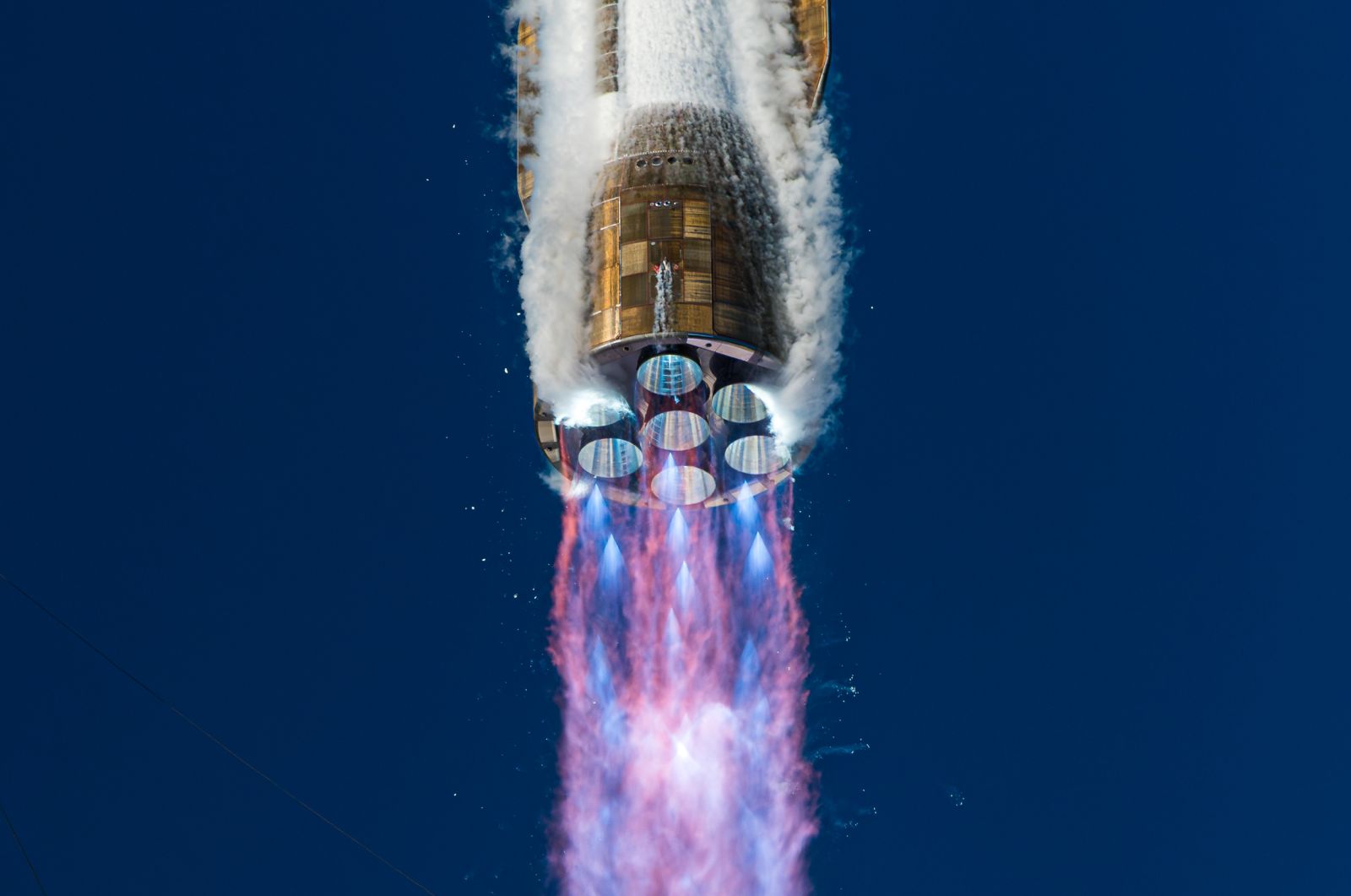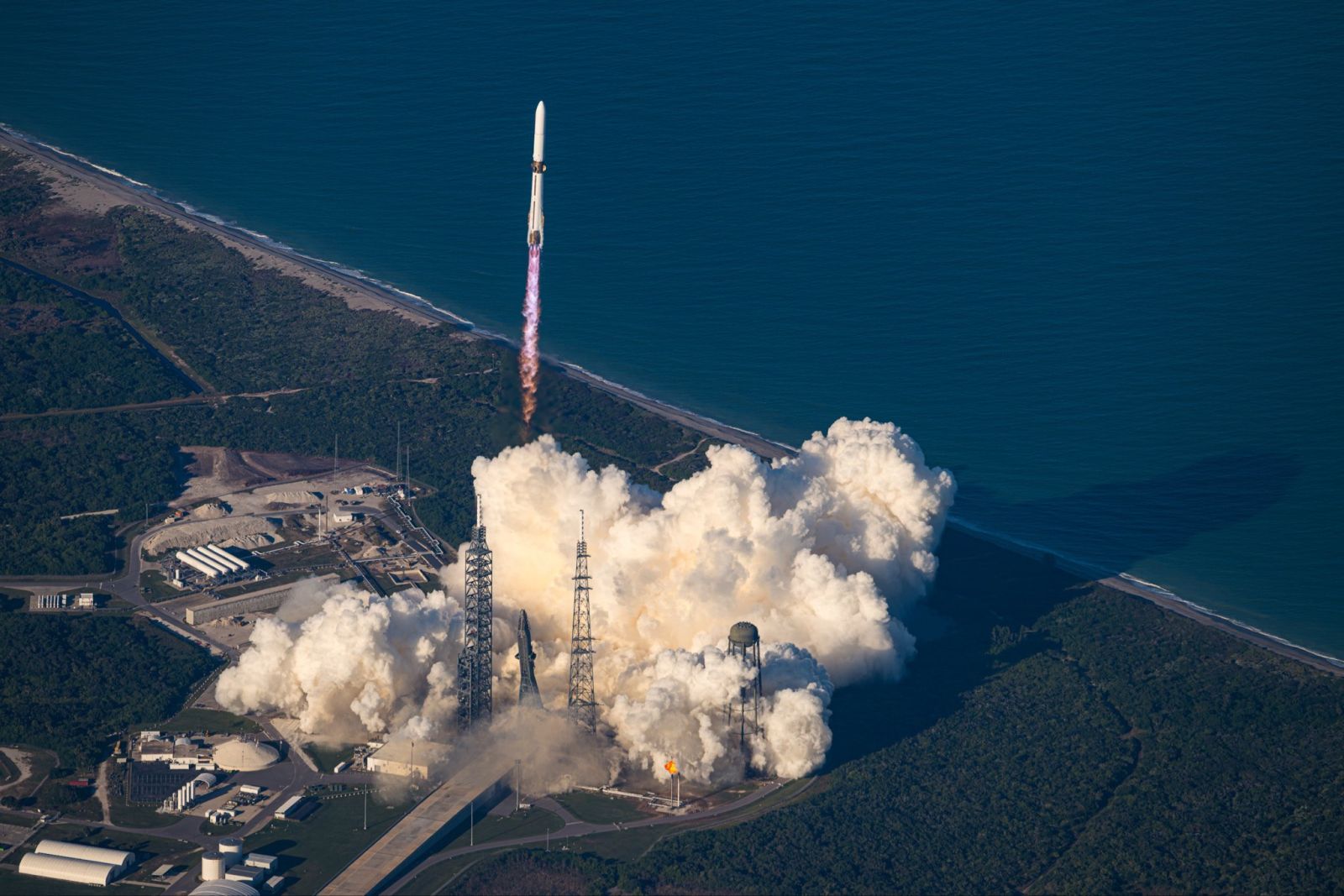🚀 Blue Origin achieves feat with landing of its giant New Glenn rocket
Follow us on Google News (click on ☆)


New Glenn at liftoff during the NG-2 mission. (November 13, 2025)
The November 13, 2025 event will remain in the annals for several reasons. The New Glenn rocket, standing 321 feet (98 meters) tall, launched from Florida carrying the two ESCAPADE probes designed to study Mars. But the most remarkable achievement concerns the controlled return of the first stage, which landed precisely on the drone ship "Jacklyn" stationed 375 miles (604 kilometers) offshore. This maneuver, previously mastered only by SpaceX, represents a technical tour de force for Blue Origin.
Jeff Bezos, Amazon CEO and founder of Blue Origin, shared his enthusiasm on social media X by posting several videos of the flight. One of them particularly well shows the approach technique used: rather than descending vertically above the ship, the stage performs a lateral maneuver to gradually position itself. This cautious method aims to avoid any violent impact in case of engine failure, as Bezos explains in his posts.
Blue Origin's strategy follows the motto "Gradatim Ferociter," which means "Step by step, ferociously" in Latin. The first stage used for this mission, named "Never Tell Me the Odds" in reference to the technical challenge, perfectly succeeded in its landing. Dave Limp, CEO of Blue Origin, emphasizes in an official statement that no booster of this size had ever achieved such a feat on the second attempt.
The design of New Glenn anticipates that each first stage can perform at least 25 flights, which paves the way for intensive reuse of launch vehicles. Post-landing photos show a stage in excellent condition, almost immaculate, suggesting its rapid reuse. This performance demonstrates the growing maturity of rocket recovery technologies, essential for reducing space access costs.


The first stage of the New Glenn rocket after its successful landing on the drone ship "Jacklyn" during NASA's ESCAPADE mission on November 13, 2025.
Credit: Blue Origin
Space launch vehicle recovery
Launch vehicle recovery represents a major advance in the space industry. This technique involves bringing at least the main stages of rockets back to Earth after their use, thus allowing their reuse for future missions.
The process involves maneuvers where the booster ignites its engines multiple times to slow its descent and precisely position itself toward a predefined landing zone. Control fins and guidance systems ensure stability during this critical phase.
Reusing launch vehicles significantly reduces launch costs, as building a new booster represents the largest portion of a mission's budget. It also accelerates the pace of launches, as recovered stages can be prepared for a new flight in just a few weeks.
This technology, popularized by SpaceX with its Falcon rockets, is now mastered by other players like Blue Origin, marking a significant evolution toward more sustainable and economical space access.
Martian exploration missions
Mars exploration is one of the priority objectives of space agencies worldwide. The red planet presents unique characteristics that make it a preferred target for searching for traces of past life and preparing for future crewed missions.
Probes like ESCAPADE, built by the University of Berkeley and Rocket Lab for NASA, are designed to study the Martian atmosphere and its interaction with the solar wind. These investigations help scientists understand the planet's climate evolution and the mechanisms that led to the disappearance of its former denser atmosphere.
These missions pave the way for future human exploration by providing essential data about available resources, radiological risks, and surface conditions, information indispensable for planning the establishment of permanent bases on the red planet.